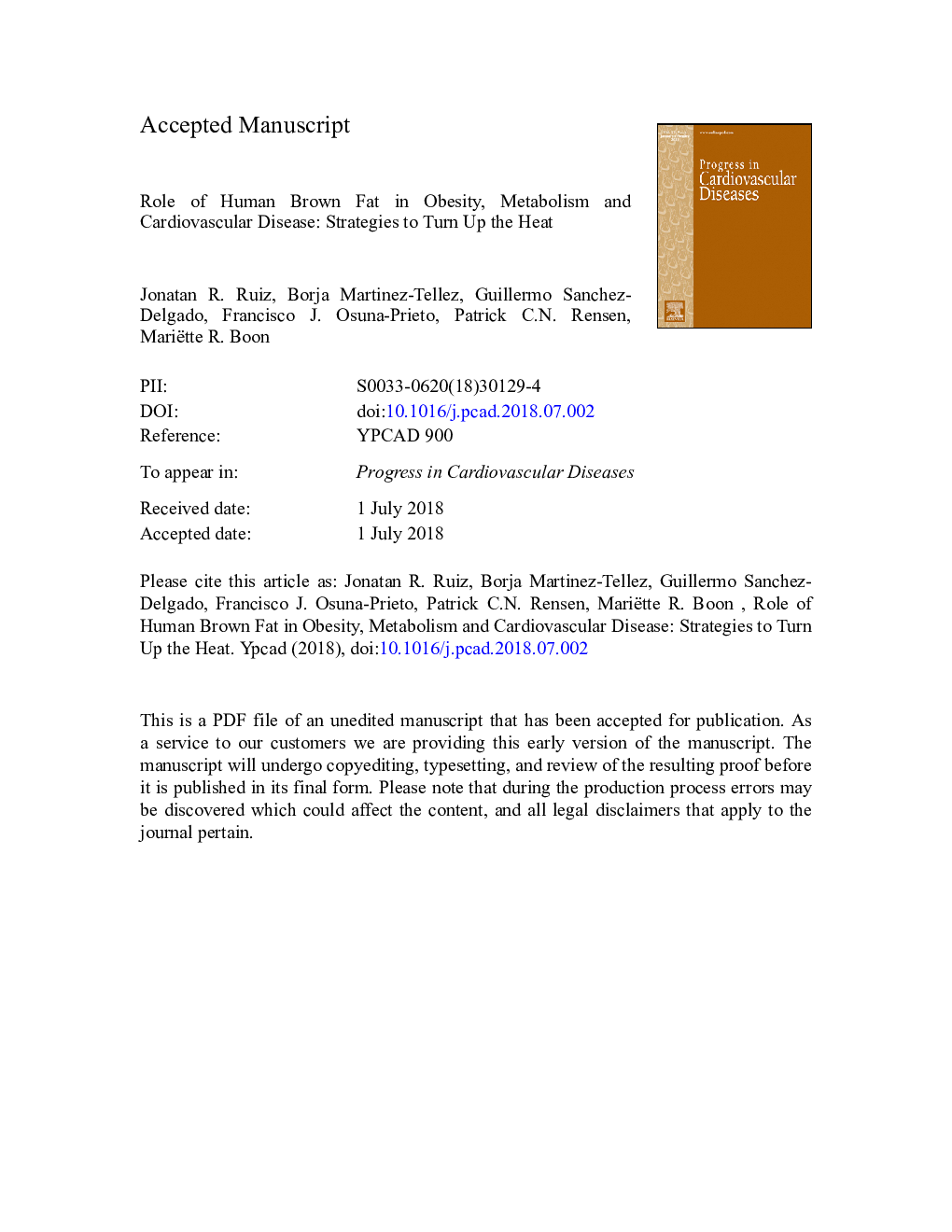| Article ID | Journal | Published Year | Pages | File Type |
|---|---|---|---|---|
| 8963258 | Progress in Cardiovascular Diseases | 2018 | 63 Pages |
Abstract
Human brown adipose tissue (BAT) was re-discovered in 2009 by several independent groups, who showed that it is present and active in adults, as judged from the profound uptake of the glucose analogue radiotracer 18F-fluorodeoxyglucose in positron-emission tomography and computed tomography scan analysis after cold exposure. A potential clinical implication of activating BAT relates to its high metabolic activity and its potential role in stimulating energy expenditure (i.e. resting energy expenditure, meal-induced thermogenesis, and cold-induced thermogenesis), which makes it an attractive target to reduce adiposity. Moreover, due to its ability to oxidise glucose and lipids, BAT activation may also potentially exert beneficial metabolic and cardiovascular effects through reducing glucose and lipid levels, respectively. This review describes the potential role of human BAT in the prevention and treatment of obesity, metabolism, and cardiovascular disease focusing on its impact on energy expenditure and management of body fat accumulation as well as on glucose and lipid metabolism. This article also summarises the strategies that are currently being studied to activate human BAT.
Keywords
LPL18F-FDGLDLRBATCITT2DAMPKSNSTRP ankyrin 1GPR120Positron-emission tomography and computed tomographyHbA1cGLUTFGF21MCT-1β3-ARGLP1β1-ARG-protein coupled receptor 120Standardised uptake valueCold-induced thermogenesistransient receptor potential cation channel subfamily M member 811C-AcetatescWATTrp18F-fluorodeoxyglucoseLRPNSTHDLTRPA1AMP-activated protein kinasehigh-density lipoproteinPET/CTUcp1mitsubcutaneous white adipose tissueWhite adipose tissuebrown adipose tissueBrowningcardiovascular diseaseNon-shivering thermogenesisTriglyceridesEnergy balancecomputed tomographypositron-emission tomographyGlucose transporterDiabetes mellitusType 2 diabetesCVDsympathetic nervous systembody mass indexBMIpharmacological agentsfibroblast growth factor 21Physical activityCold exposureLipoprotein lipaseLow-density lipoproteinLDLSUVmonocarboxylate transporter 1glycated haemoglobinHounsfield unitsexercisetransient receptor potentialTransient receptor potential vanilloid 1uncoupling protein 1Low-density lipoprotein receptor-related proteinglucagon-like peptide-1WATCO2β1-Adrenergic receptorβ3-Adrenergic receptorLow-density lipoprotein receptor
Related Topics
Health Sciences
Medicine and Dentistry
Cardiology and Cardiovascular Medicine
Authors
Jonatan R. Ruiz, Borja Martinez-Tellez, Guillermo Sanchez-Delgado, Francisco J. Osuna-Prieto, Patrick C.N. Rensen, Mariëtte R. Boon,
